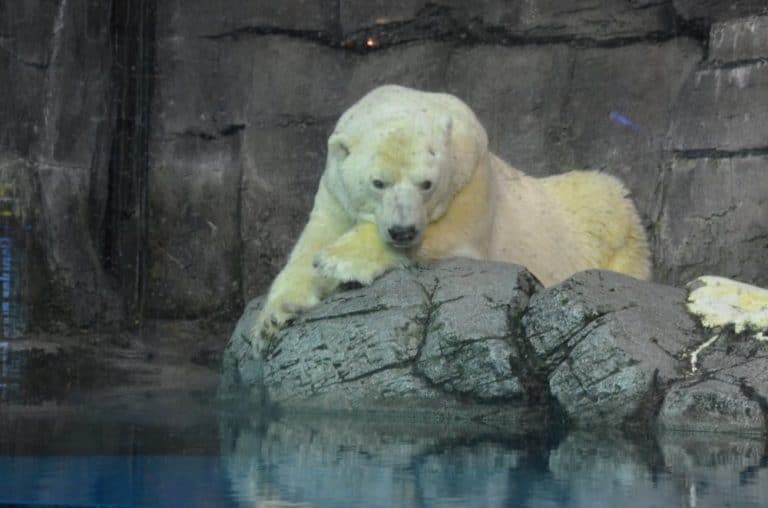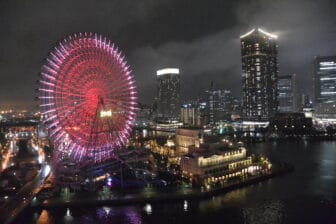Yokohama
Population of Yokohama: 3,732,616
Telephone area code: +045
Automotive symbol: Yokohama (横浜).
Surface area: 437,56 Km2
Yokohama is the second most populous city in Japan and the largest municipality by population if you bear in mind that Tokyo is a prefecture in its own right from an administrative perspective.
It is the capital of Kanagawa prefecture, the main commercial hub for the vast metropolitan area of Tokyo and a valuable economic centre both from a maritime and an industrial point of view.
It is made up of 18 districts.
What to see in Yokohama
The historic area of the port is called Kannai.
Of particular interest are the museum ship Hikawa Maru, and the Yokohama marine tower, one of the tallest lighthouses in the world.
The area that is known as Chinatown is also interesting as it is one of the largest in Japan from the point of view of its continual expansion.
During the period when Yokohama was the main port of call in Japan, the area known as Yamate was where all the foreigners lived.
The area where they lived was known as “the bluff” – it is on a promontory. Nowadays it is possible to visit the foreigners’ cemetery.
Minato Mirai (literally meaning: the port of the future) is the new zone that has been designed to unite the area of Kannai and the port itself.
Now recognised as one of the main commercial and tourist centres of the city, it houses the Landmark Tower, which, until 2004, was the highest building in Japan.
At Minato Mirai you will also find the Cosmo Clock 21 Ferris Wheel which, when it was built in 1989, was the tallest in the world.
History of Yokohama
Yokohama was little more than a small fishing village up to the end of the Edo period (1603 – 1868) but with the forced opening of Japanese ports to international trade which took place in 1853, it became one of Japan’s main cities in the “contact zone” with the rest of the world for more than half a century.
The government of Tokugawa exercised a strict control over all the traders and their contacts with foreigners, bearing in mind that the Japanese themselves were forbidden from leaving the country.
After the banning of Christian practice, the only Europeans who were allowed to trade with Japan were the Dutch and they were relegated to the small island of Deshima opposite Nagasaki.
Restrictions were also placed on trade with the Chinese, the Koreans, the Ainu and the inhabitants of Ryukyu.
In 1853, on the orders of the President of the United States, Matthew Perry, who held the rank of Commodore in the U.S. Navy, arrived with four war ships in the Bay of Edo in order to force Japan into opening up to international trade.
Upon meeting with the shogun’s delegates, he left a series of requests and advised his hosts that he would return within a year to hear their responses.
In 1854, the Japanese, under this threat of superior military might, were obliged to accept the conditions laid down by Perry and they signed the Convention of Kanagawa right there in the small village of Yokohama.
The Japanese government did their utmost to ensure that the westerners were kept as far away as possible from the centre of power and sought to repeat the model from Nagasaki.
Confronted by further pressure from the Americans who were asking to be afforded a stopover in Edo or somewhere nearby the Tokaido Road, they succeeded in convincing them to settle in Yokohama which was further away from the future capital and from the principal routes across the country.
This was where the Americans obtained permission to reside, to buy houses and land, to practice their Christian religion (which was still forbidden in Japan) and even to be judged, in the event of a legal dispute, by American laws.
However, these treaties were seen to be “unequal” as the conditions undoubtedly favoured the foreigners and this provoked discontentment amongst the local lords who, in a few short years, brought about the fall of the Tokugawa government.
Yokohama then became the commercial centre for the headquarters of western trading companies and the main port of call in Japan.
The town grew very quickly, initially along the bay and subsequently going up into the higher ground above the port.
A flourishing colony of Chinese and Korean settlers was established in the city.
Yokohama’s Chinatown, along with that of Kobe, is one of the largest in Japan.
The city continued to grow during the Meiji and Taisho periods and became the place where much of the west’s innovations were first introduced into Japan.
Amongst these novelties were: western dressing, photography (for which the Italian Felice Beato was one of the pioneers), the first ice-creams and beer, not to mention the first English language newspaper in Japan.
During the Meiji and the Taisho periods, the area between Yokohama and Kawasaki underwent considerable industrial development and this became what is now known as the Keihin Region.
Destroyed by the earthquake of 1923 and again during the war, the process of reconstruction began under the American occupation and its development carried on in the subsequent decades and continues to do so today.
Aquarium again
[ Jan.2014 ] My family likes aquariums. On the last day of our stay in Japan this time, we went to all the way to Hakkeijima Sea Paradise in Yokohama, though it was a quite…
The next day was sunny
[Feb. 2023] On the second day in Yokohama, Japan, the sun was shining and completely opposite of the bad weather of the previous day. And it was warm, too. If we had planned this trip…
Thanks to our ‘angel’
[Feb. 2023] We spent a whole month in February this year with my elderly mother in Japan. On this day, the whole family (mum, my sister and her husband and us) was supposed to travel…




